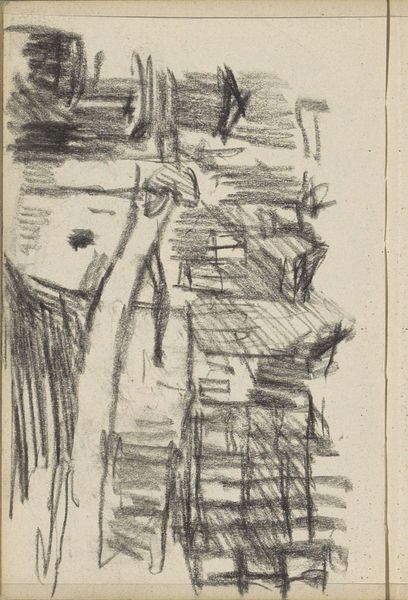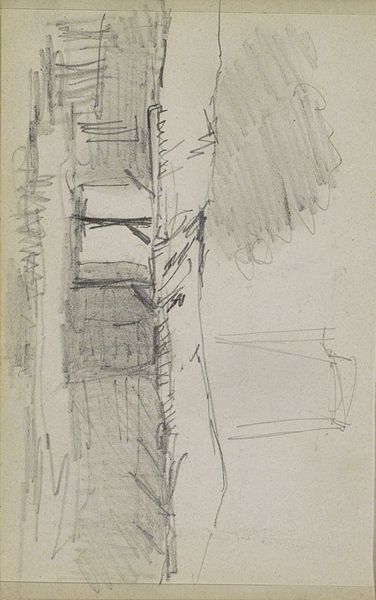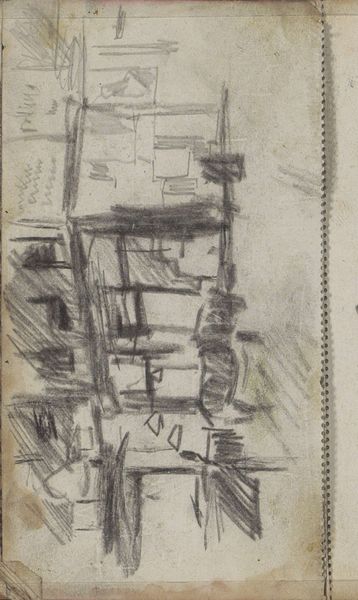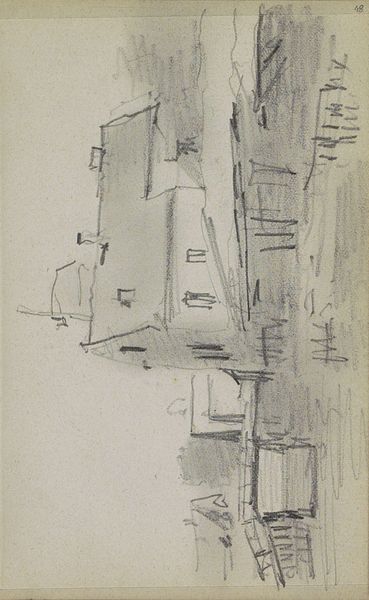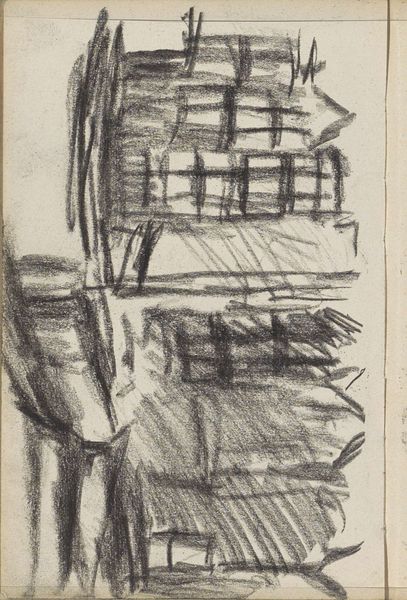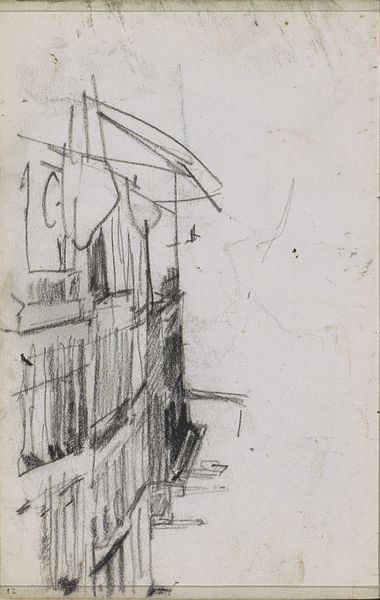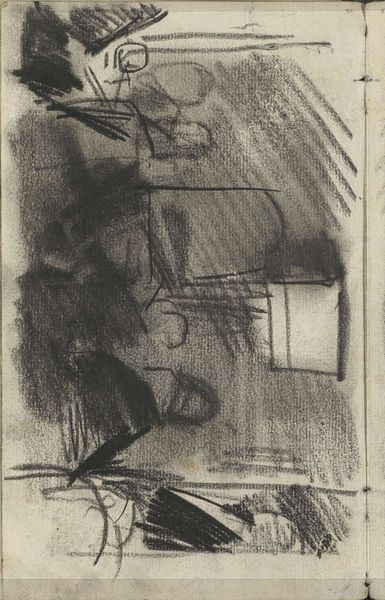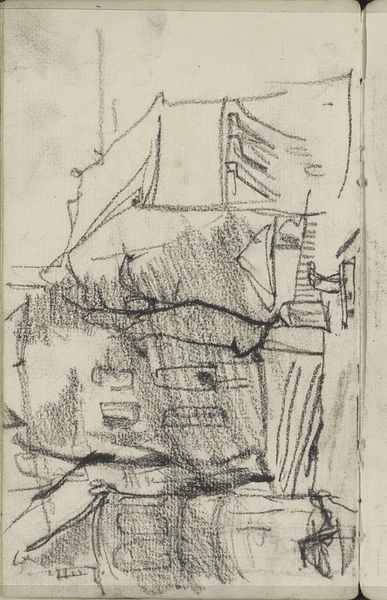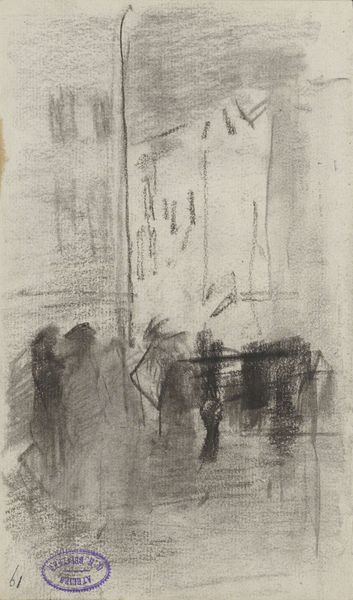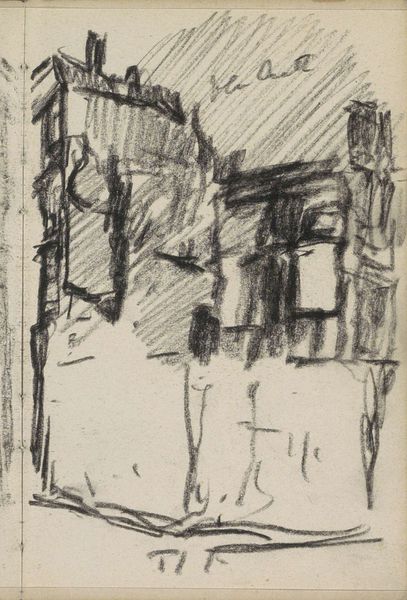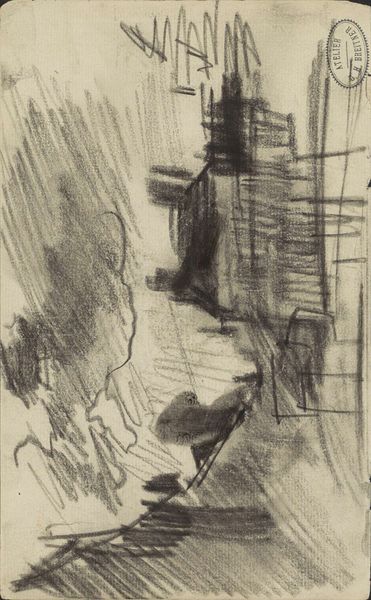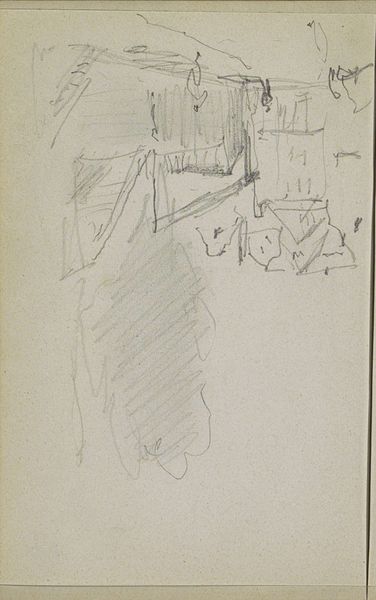
Copyright: Rijks Museum: Open Domain
Editor: Here we have "Figuren aan een gracht, mogelijk in Amsterdam," or "Figures on a Canal, Possibly in Amsterdam," by Isaac Israels, dating from between 1875 and 1934. It's a pencil drawing, and it feels very fleeting, like a momentary glimpse of city life. What do you see in this piece, beyond just the surface? Curator: I see a visual record deeply embedded in its time, a product of late 19th and early 20th century social dynamics. Israels, positioned as a privileged observer, captures figures on the margins, almost as shadows within the cityscape. Note the canal—traditionally a space of commerce, but also, historically, a dividing line. How do these lines – both literal and metaphorical – affect our reading of the artwork? Editor: That's a compelling point. I hadn’t considered the canal as a dividing line, more as a typical feature of Amsterdam. Curator: Exactly, challenging assumptions is key. Think about the "flaneur," a figure often associated with this era – usually a bourgeois male, casually observing the city. But where are the women, the working class? Israels gives us hints, a fleeting glimpse, but whose gaze are we adopting, and what are we missing? The sketchiness of the drawing emphasizes the ephemeral nature of these observations. Editor: So the incompleteness of the sketch mirrors the incomplete story being told about the city and its inhabitants? Curator: Precisely! It forces us to confront the silences, the absences within the representation. It’s not just a pretty picture of Amsterdam, but an invitation to critique the power dynamics inherent in seeing and being seen, in documenting and being documented. Editor: This has completely changed how I view the drawing. I was initially focused on the Impressionistic style, but now I see the social commentary embedded within. Curator: That's the power of art history. It’s not just about identifying styles, but about unpacking the complex layers of meaning that artworks carry. Editor: Thank you, that was enlightening.
Comments
No comments
Be the first to comment and join the conversation on the ultimate creative platform.
